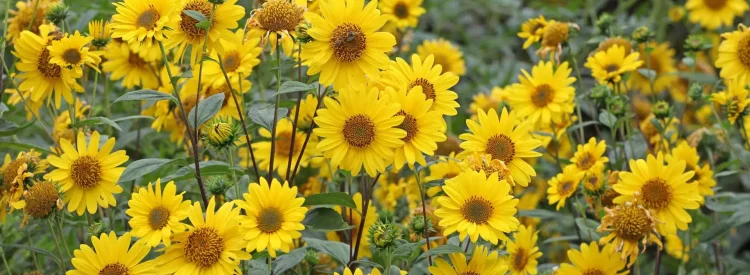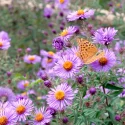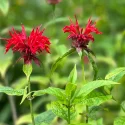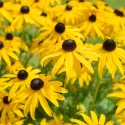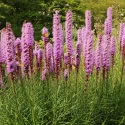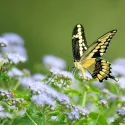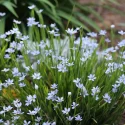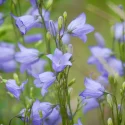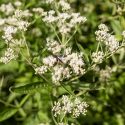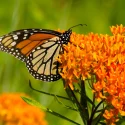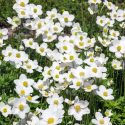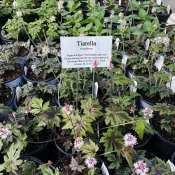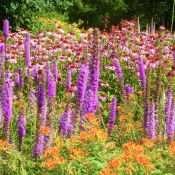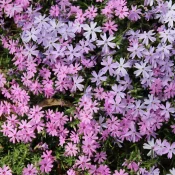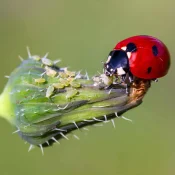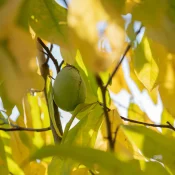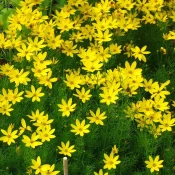As you can imagine by the name, False Sunflowers offer bright yellow blooms towards the end of summer. They are originally prairie flowers, known for their ability to thrive in full sun. In our gardens, they are easy to grow and drought-tolerant when established. Native False Sunflowers can get tall—4-6 feet!—but cultivars offer shorter options. Scroll below to find out more about these sunny garden gems.
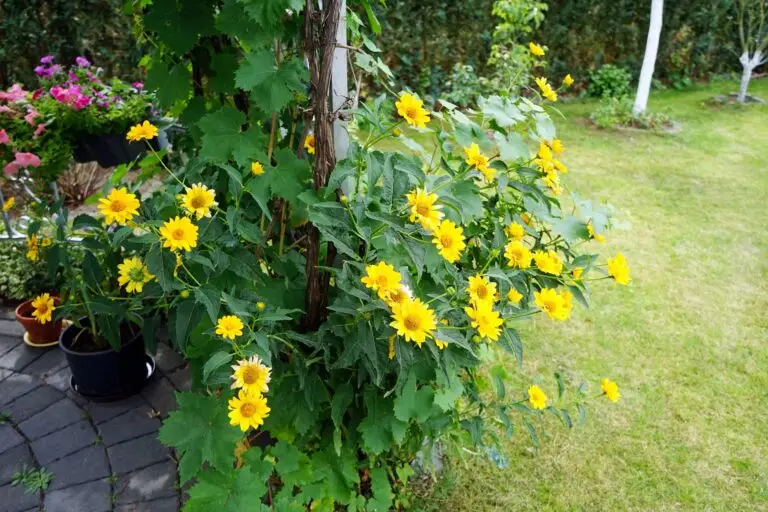
False Sunflowers have a funny, somewhat accusatory common name—who says the flowers are trying to be false?! No matter what you call these flowers, they are pollinator favorites.
What is the difference between a False Sunflower and a regular Sunflower?
You might be wondering—is a False Sunflower a sunflower? You know, the ones that we see in fields on Instagram? The short answer is no. The sunflowers we see printed on clothing and everywhere in the fall are called Common Sunflowers. False Sunflower and Common Sunflower are two different species.
Here are their similarities and differences:


False Sunflower
Heliopsis helianthoides
- Perennials: plant once and they come back, year after year
- Native to 70% of the United States, from New Mexico to Maine
- Loves full sun
- Tall: 4-6 feet
Common Sunflower
Helianthus annus
- Annuals: you must plant by seed every year
- Native to the entire United States and most of Canada
- Loves full sun
- SUPER TALL: 4-10 FEET
The many names of False Sunflower
Most native plants have a few different common names, or names given by the generations before. False Sunflower is also sometimes called Oxeye Sunflower.
No matter how many common names a plant has, there is always only one Latin name. This helps us all share knowledge and not get confused! False Sunflower’s Latin name is Heliopsis helianthoides. To make sure you’re looking or finding the right plant, match this Latin name—Heliopsis helianthoides—at plant nurseries and plant sales.
If False Sunflower is too tall for you…
There are plenty of other bright-yellow native flowers that are shorter for sunny gardens. Green-and-Gold is a groundcover (6-12 inches tall), Coreopsis is only around 1-2 feet tall (perfect for borders!) and Black-Eyed Susan normally tops out at 4 feet. Here are some bright yellow natives to consider:
False Sunflower looks amazing planted in groups
If you have the space, plant 5+ False Sunflowers together in a group to create a wall of flowers in the summer. Because False Sunflower looks so good planted in a group, we’ve included it in our round-up of Single-Plant Gardens, which are landscaping ideas driven by a single plant (aka one-stop landscaping.)
Where can you find False Sunflower plants or seeds?
Sadly, many native plants are challenging to find. But we’re here to make this easier! Skip visiting the big-box nurseries and try these four sources instead:
Where can I find seeds and plants?
Finding native plants can be challenging (we partly blame Marie Antoinette.) To make it easier, we’ve assembled four sourcing ideas.
300+ native nurseries make finding one a breeze
Explore 100+ native-friendly eCommerce sites
Every state and province has a native plant society; find yours
Online Communities
Local Facebook groups are a great plant source
What to plant with False Sunflower
False Sunflower is a true sun lover, preferring full-sun environments. There are lots of other native flowers that thrive in this same sun, including Rattlesnake Master, Coneflower, Milkweed, Joe Pye Weed, and Bee Balm.
If you love seeing sunny flowers in your garden throughout the end of the summer (and in a vase—these are great cut flowers!), False Sunflower is a native plant for you. They thrive in full sun and attract loads of pollinators. Because they are perennials, plant once and watch them return year after year. Happy planting!
Sources
- Nelson, Gil. Best Native Plants for Southern Gardens: A Handbook for Gardeners, Homeowners, and Professionals, (2010).
- Harstad, Carolyn. Go Native! Gardening with Native Plants and Wildflowers in the Lower Midwest. (1999), 209-210.
What if your feed was actually good for your mental health?
Give your algorithm a breath of fresh air and follow us.
